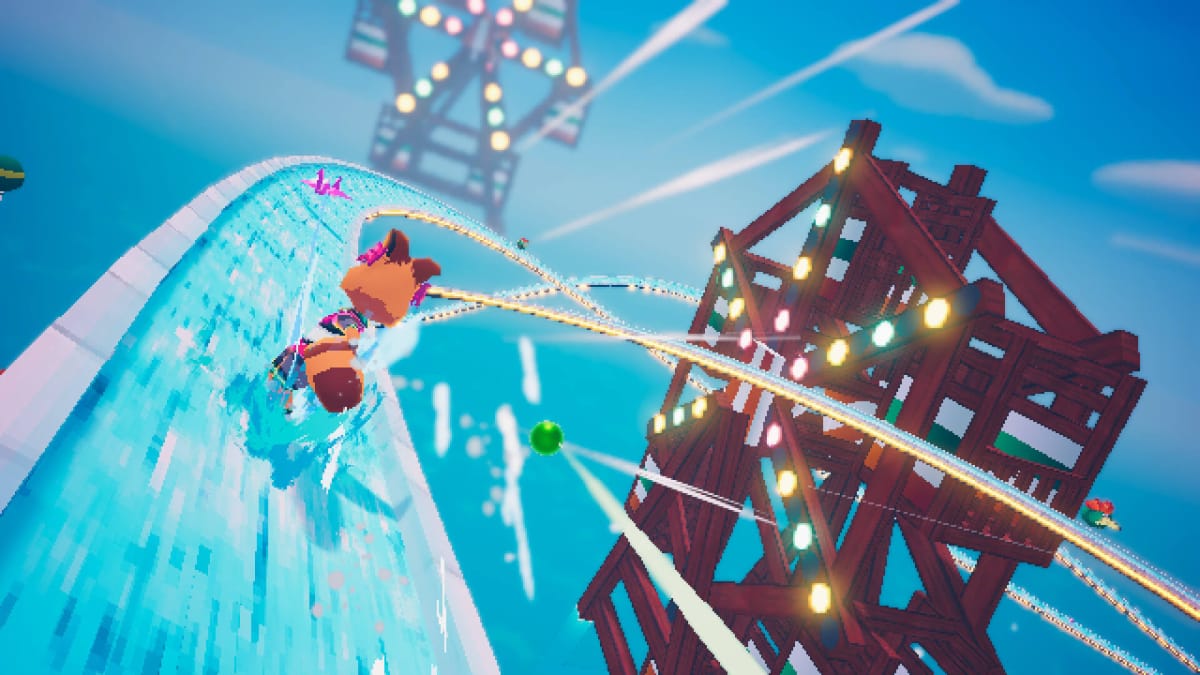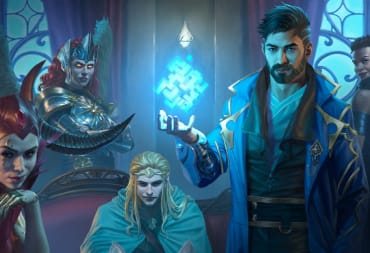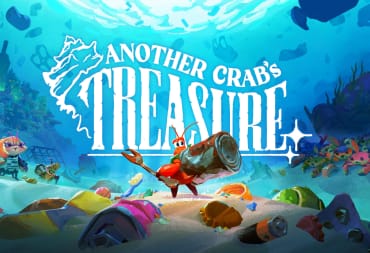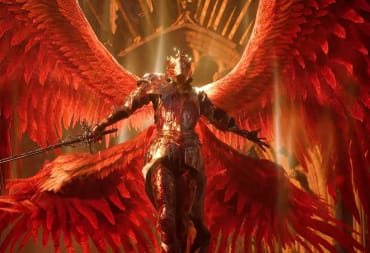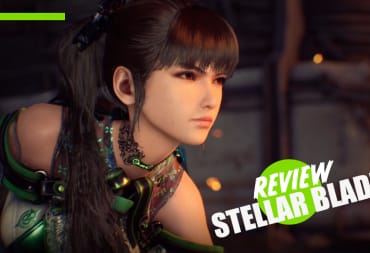An idea that can commonly be overlooked in the indie retro revival scene is the concept of establishment. The possibility that your product was lost to time and would only see the light of day once 20+ years had passed, and the characters you’ve created would fit right in with other titles of relevance and reverence. It’s a tricky tightrope to walk across, and it’s one that Lunistice challenges.
This is the debut release from A Grumpy Fox, a pseudonym for Dennis Kröner, technical producer for the indie publishing program Deck13 Spotlight, who coincidentally published Lunistice. Finding itself fitting snugly inside its catalog, this is a 3D platformer that showcases the fractured dreams of the cute tanuki Hana. After an event known as “Moonfall”, she is one of many who is stuck inside her fractured memories and must find a way out, under the watchful eye of an unknown assistant.
One thing that almost immediately jumps out is Lunistice’s focus on pacing, which is brisk throughout. Hana runs at a fairly quick speed, and there are speedrunning elements like S-ranks and personal best times to work on, although you’re never granted the efficient tools to see times shaved in such a fashion. It’s this attempt at replayability that Lunistice banks on, which it doesn’t make a compelling case for, even with the inclusion of playable characters from Toree 3D and Holomento when completed.
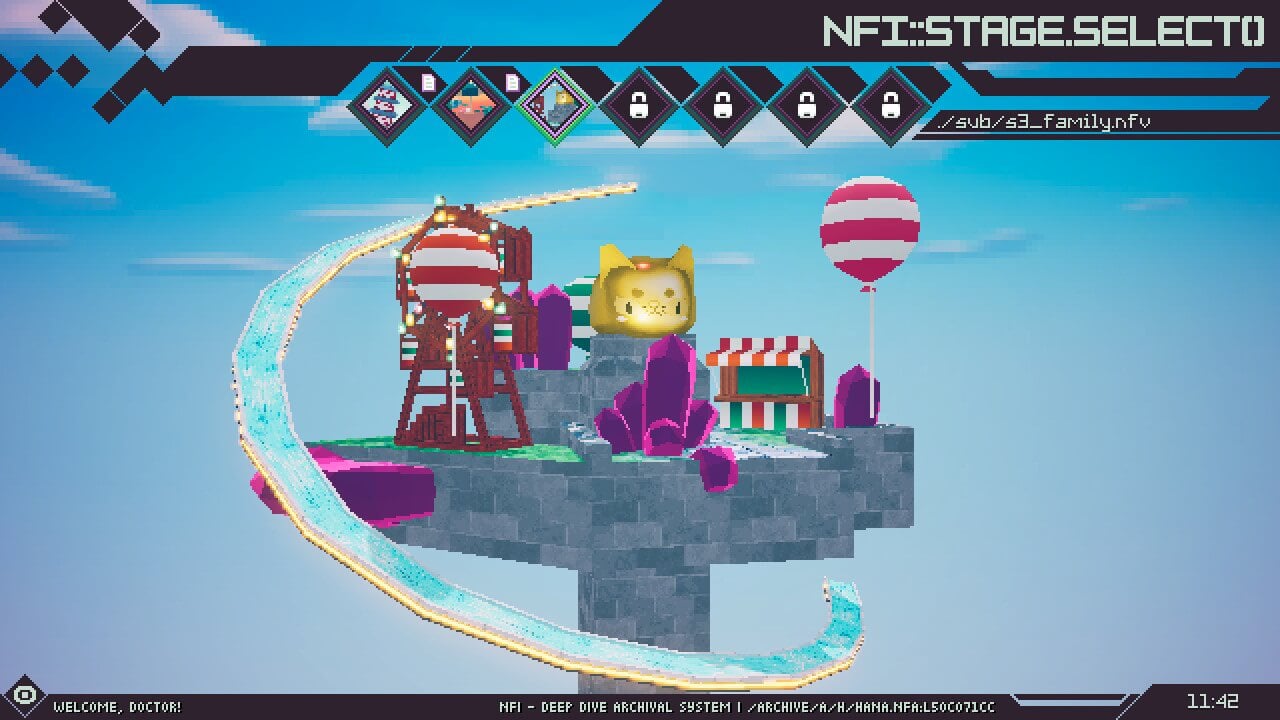
The closest comparison would be the work of Analgesic Productions, namely Anodyne 2, although Lunistice is more straight-up and basic in how it presents its platforming challenges. Alongside the platforming, you also have a small handful of enemy types that are largely static obstacles within jumping puzzles, all of which are whisked away by Hana’s melee attack. It helps to lend itself to the sort of digestible content Lunistice aims to be, which is perfectly fine.
On the whole, Lunistice finds itself emulating the 3D platformers of times past with a startlingly well-done execution, despite lacking depth in its mechanics. When compared to the current crop, it doesn’t find itself with the same slower-paced gameplay as Frogun, but it also doesn’t see itself reaching the same speeds or tricks as something like Super Sami Roll. Instead, it harbors a comfortable middle ground, choosing to focus on elements like atmosphere as much as tight gameplay.
It’s a strange thing to mention, but Lunistice feels almost detached from the type of 3D platformers on the market you’ve come to expect. It’s almost otherworldly in its presentation, feeling like the type of product you’d see in another established series more well-known. If you put an arcade machine that read “Lunistice” inside a game like Pokémon, I personally wouldn’t blink twice.
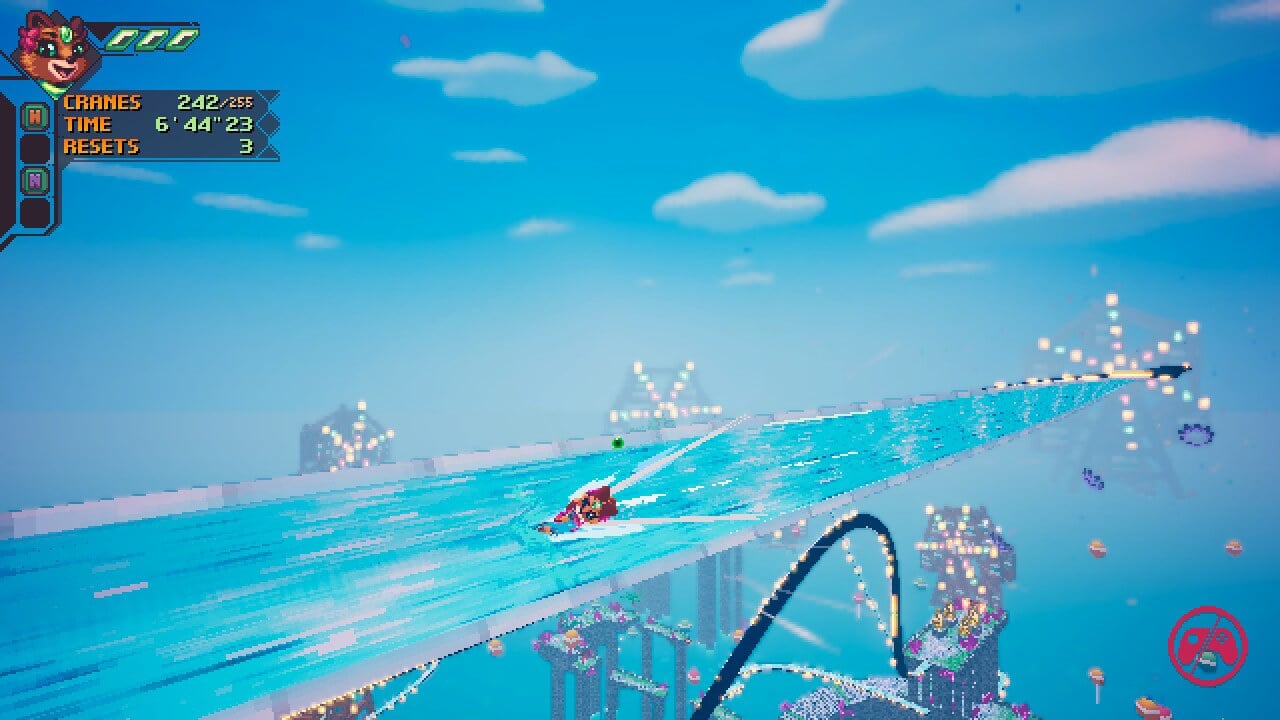
It’s a feeling and a vibe that is elevated by the music also — a charming 90s retrofuturism effort from the Chenso Club composer, Knasibas. Filled with soft and skittering drums, cloudy pianos, and bouncy rhythms, it’s the type of soundtrack you’d expect to hear through the speakers of a Nintendo console. It fits right in with the aesthetic, and the type of adventure you’re about to go on, and helps Lunistice find an identity almost by itself.
Within 15 levels across 7 biomes, you’ll find yourself given a fair challenge in traversal, and an unfair impediment in visual noise. The skyboxes in Lunistice are rich in detail, and sometimes breathtaking to witness, despite a considerably aggressive linear structure. Pushed to the limit with its 32-bit aesthetic, each level is unique in visual flair, A Grumpy Fox applying set dressing with such liberality that it can turn these dreamscapes into a noisy nightmare.
When it comes to readability and telegraphing exactly where Hana is in correspondence to the platforms around her, a dithering shadow barely visible underneath everything else can lead to unfair deaths. As is the case with many 3D platformers, the camera can also become a hindrance, in this case, it's because of its uninvolvement, with it being unable to look properly above or underneath Hana’s person at all times. Alongside this, is leap-of-faith gameplay that is willed into existence from the challenges the camera presents.
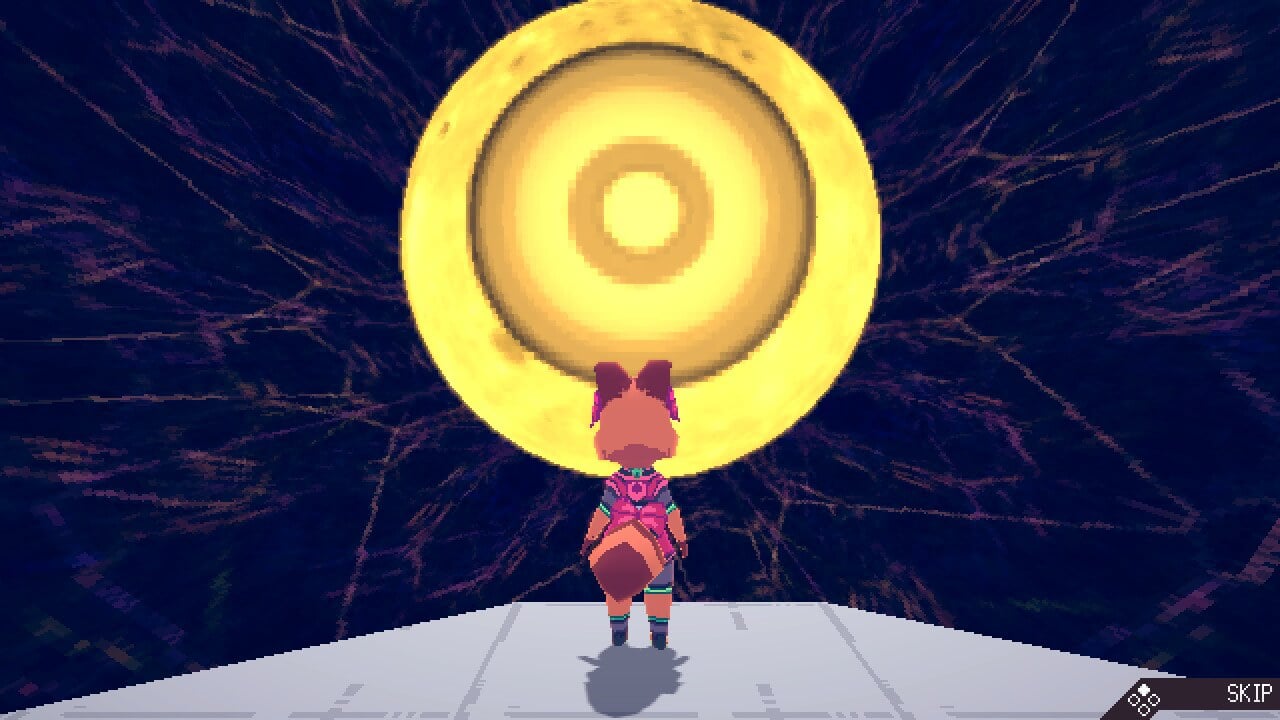
Still, it’s one of the few cards that Lunistice has up its sleeve throughout, with the lack of evolution in level design showcasing that. Yeah, there are different obstacles that may show up, like rhythmic platforms that appear and disappear on a beat, but these are few and far in between, even with their capsule length. Inside their own levels, they also seem largely ignored.
Because of this, Lunistice sees itself occupying a space of spectacle as opposed to replayability. You’ll grind giant rails that spiral around floating temples that represent Hana’s past and personality, and frolic through dense environments that retain said density despite the narrative setting of fractured dreams. It’s an incredibly gorgeous game to have an adventure in, but does that adventure have any substance? No, not really.
Beyond the lack of variety with its platforming obstacles and level design, it possesses a narrative that chooses to remain ambiguous to the very end, despite narrative beats to assume otherwise. Hana as a character appears to have a rookie attitude in text logs but shows promise according to external sources. She makes a friend before this Moonfall event, but their existence is only palpable through those same text logs, failing to make a presence inside her own dreams. Nothing makes a lasting impression.
It’s this lack of involvement that leaves Lunistice missing as much as it hits, which is devastating considering its modest price tag. On the surface, it makes for a compelling case of beautiful environments, soft atmospheres, and infectious music, but anyone looking for depth will not find it. Whether it’s in the story or the gameplay, it’s an experience you may quickly see yourself forget, only to be seen briefly in the same dreams Lunistice inhibits.
TechRaptor reviewed Lunistice on Nintendo Switch using a copy provided by the publisher. The game is also available on PC.
Review Summary
Pros
- Aesthetically brilliant environments to explore
- Fantastic soundtrack from Knasibas
- Despite lack of depth, gameplay remains tight throughout
Cons
- Level design fails to keep up, even with its short length
- Story falls flat representing world and characters
- Speedrunning angle lacks attention necessary to compete
Have a tip, or want to point out something we missed? Leave a Comment or e-mail us at tips@techraptor.net
